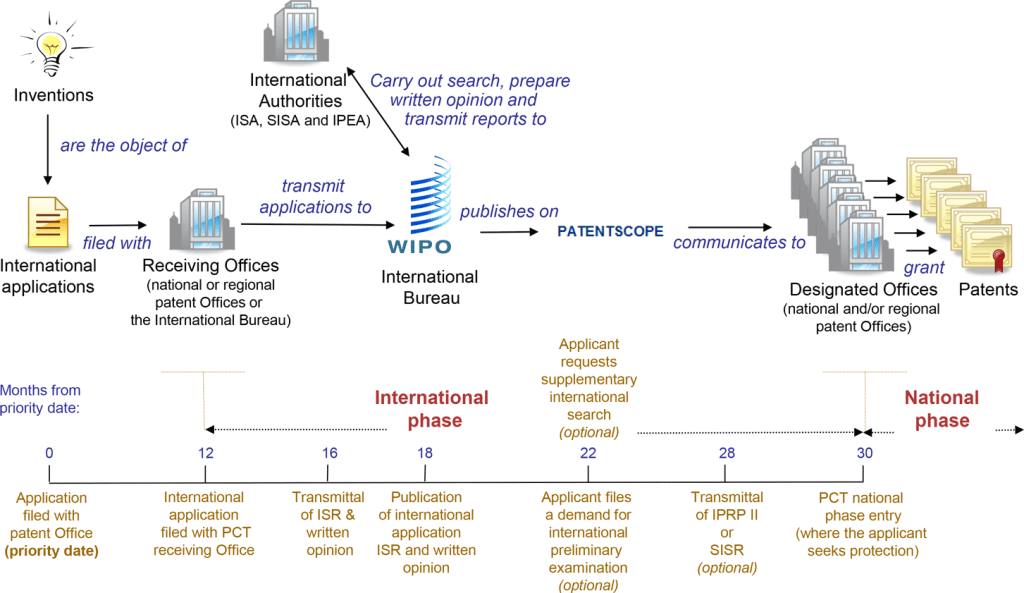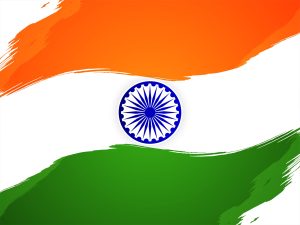The Patent Cooperation Treaty (PCT) is an international treaty that streamlines the process of applying for patents in multiple countries. It provides a unified procedure for filing patent applications to protect inventions in many countries simultaneously. The PCT system offers many advantages to inventors and companies seeking international patent protection. This article provides a comprehensive overview of the PCT system, the application process, the roles of various authorities involved, strategic considerations, and common challenges that applicants may face.
1. Overview of the PCT System

From WIPO PCT FAQs
The Patent Cooperation Treaty (PCT) is a key part of the global patent system, managed by the World Intellectual Property Organization (WIPO). It makes it easier for inventors to apply for patents in multiple countries by allowing them to submit just one “international” application recognized by all PCT member countries. This means inventors don’t have to file separate applications in every country, saving them time and money.
There are several benefits to filing a PCT application. First, it postpones the high costs of filing individual patent applications in different countries, giving inventors more time to see if their inventions will be profitable in other markets. The PCT process also includes an international search and a preliminary examination, which helps inventors understand the potential for patenting their invention before deciding to pursue patents in specific countries. Important organizations that play a role in the PCT process include the International Bureau of WIPO, International Searching Authorities (ISAs), and International Preliminary Examining Authorities (IPEAs).
2. Application Procedure
The PCT patent application process is structured in several phases, starting with the filing of an international application. This application must be submitted in one of the member states, which acts as the “Receiving Office.” The initial application should include a request, a description of the invention, one or more claims, drawings (if necessary), and an abstract. Filing fees are required, and they vary depending on the receiving office and the nature of the application.
- Filing: You submit an international application to a national or regional patent office or WIPO. You must follow the PCT rules, use one language, and pay one set of fees.
- International Search: An International Searching Authority (ISA), a major patent office, looks for published patent documents and other literature that might affect your invention’s patentability. They provide a written opinion on whether your invention can be patented.
- International Publication: Your international application will be made public 18 months after your earliest filing date.
- Supplementary International Search (optional): If you want, a second ISA can search for additional published documents that the first ISA may have missed. This is useful because prior art can vary in different languages and fields.
- International Preliminary Examination (optional): At your request, an ISA can conduct a further analysis of your invention’s patentability. This usually involves reviewing a version of your application that you have updated based on the first opinion.
- National Phase: After the PCT process, which is generally 30 months from your initial filing date, you begin applying for patents directly in the countries where you want protection.
3. Roles of International Searching and Preliminary Examining Authorities
International Searching Authorities (ISAs) and International Preliminary Examining Authorities (IPEAs) play critical roles in the PCT process.
- International Searching Authorities (ISAs): These entities are responsible for conducting the international search to identify prior art that may affect the patentability of the invention. The ISA provides the applicant with the International Search Report (ISR) and a Written Opinion, which outlines any issues related to novelty, inventive step, and industrial applicability.
- International Preliminary Examining Authorities (IPEAs): IPEAs conduct the optional international preliminary examination. This examination offers a more in-depth analysis of the patentability of the invention, considering any amendments made by the applicant in response to the initial search report. The outcome of this examination is a report that further helps applicants evaluate the likelihood of obtaining a patent in their desired jurisdictions.
The ISR and the Written Opinion are vital for applicants as they provide an early indication of potential obstacles to patentability. This information can influence the applicant’s decision on whether to proceed with national phase entries and in which countries.
4. Strategic Considerations for Applicants
When considering a PCT patent application, applicants must carefully strategize to maximize their chances of success and optimize costs.
- Timing of Filing: Deciding the optimal time to file a PCT patent application is crucial. Early filing can secure an early priority date, which is important in fast-moving technological fields. However, applicants must balance this with the need for sufficient development of the invention to meet patentability requirements.
- National Phase Entry Strategies: As the international phase concludes, applicants must decide in which jurisdictions to pursue patent protection. This decision should be based on market potential, cost considerations, and the strategic importance of certain regions. Each national phase entry involves fees and potential translation costs, so careful selection is essential to avoid unnecessary expenditures.
- Cost-Benefit Analysis: A thorough cost-benefit analysis is vital when deciding between a PCT patent application and direct national filings. The PCT route offers cost savings in the early stages and provides a unified process for managing applications. However, in some cases, direct filings may be more appropriate, especially when the target market is limited to a few countries.
5. Common Challenges and Considerations
Navigating the PCT process can be complex, and applicants often face several challenges.
- Obstacles in the PCT Process: Common obstacles include meeting the specific formal and procedural requirements of various receiving offices and ensuring timely payment of fees. Applicants must also be vigilant about deadlines, particularly the 30-31 month deadline for national phase entry.
- Legal and Procedural Complexities: The PCT process involves navigating different legal frameworks and procedural rules across jurisdictions. Understanding these complexities and working with experienced patent attorneys can help applicants avoid costly errors and delays.
- Impact of Changes in International Patent Laws: The international patent landscape is continually evolving, with changes in laws and treaties that can impact PCT applications. Applicants need to stay informed about these developments and consider their potential implications for their patent strategy.
In conclusion, the PCT system provides a valuable pathway for obtaining international patent protection, but it requires careful planning and consideration of various strategic and procedural factors. By understanding the roles of the authorities involved, the requirements of the application process, and the common challenges, applicants can better navigate the complexities of the PCT system and enhance their chances of securing broad and effective patent protection for their inventions.
If you would like EC Innovations IP Solution to conduct a check to see if your patent is effectively protected, please feel free to contact us.





